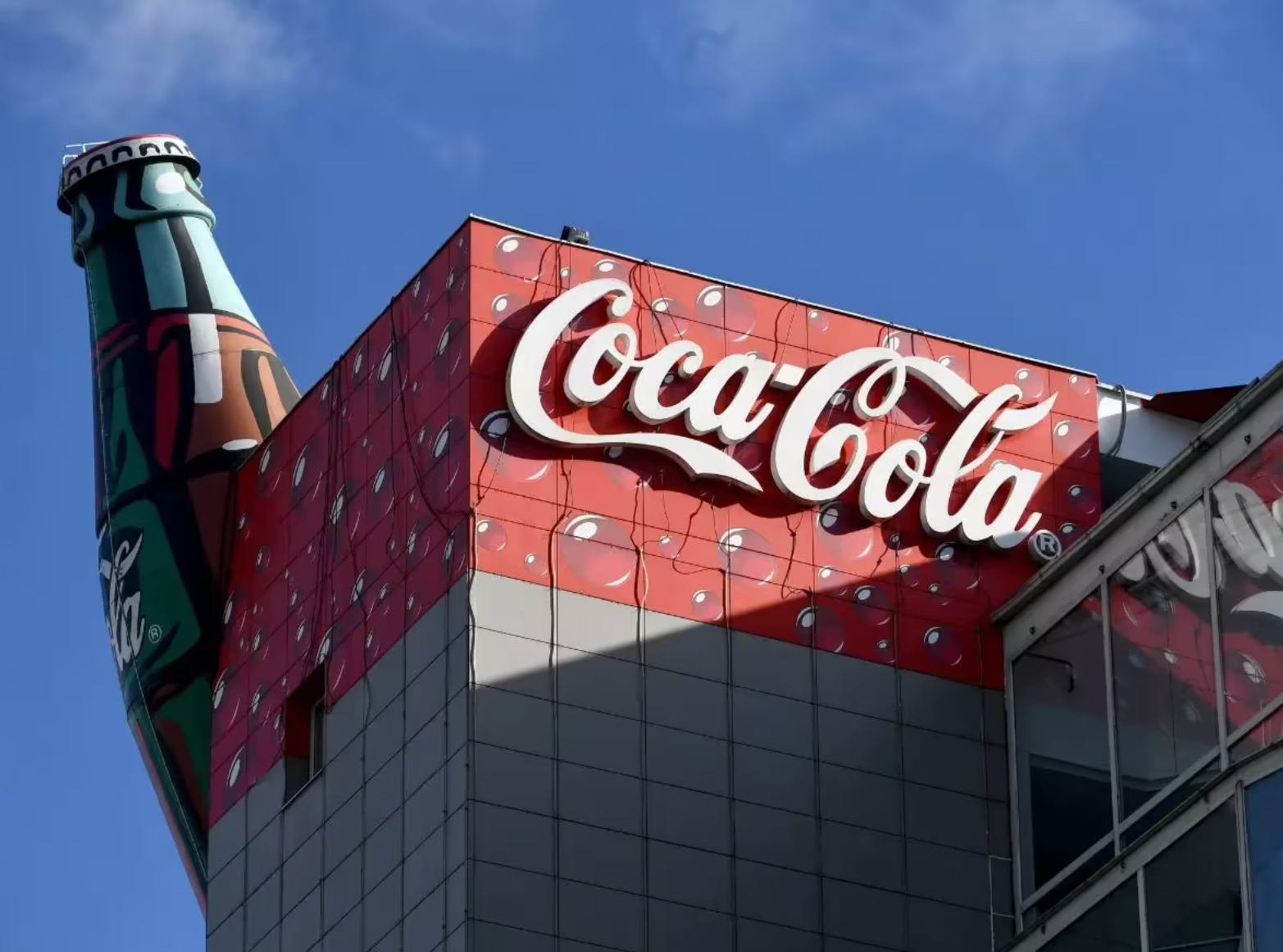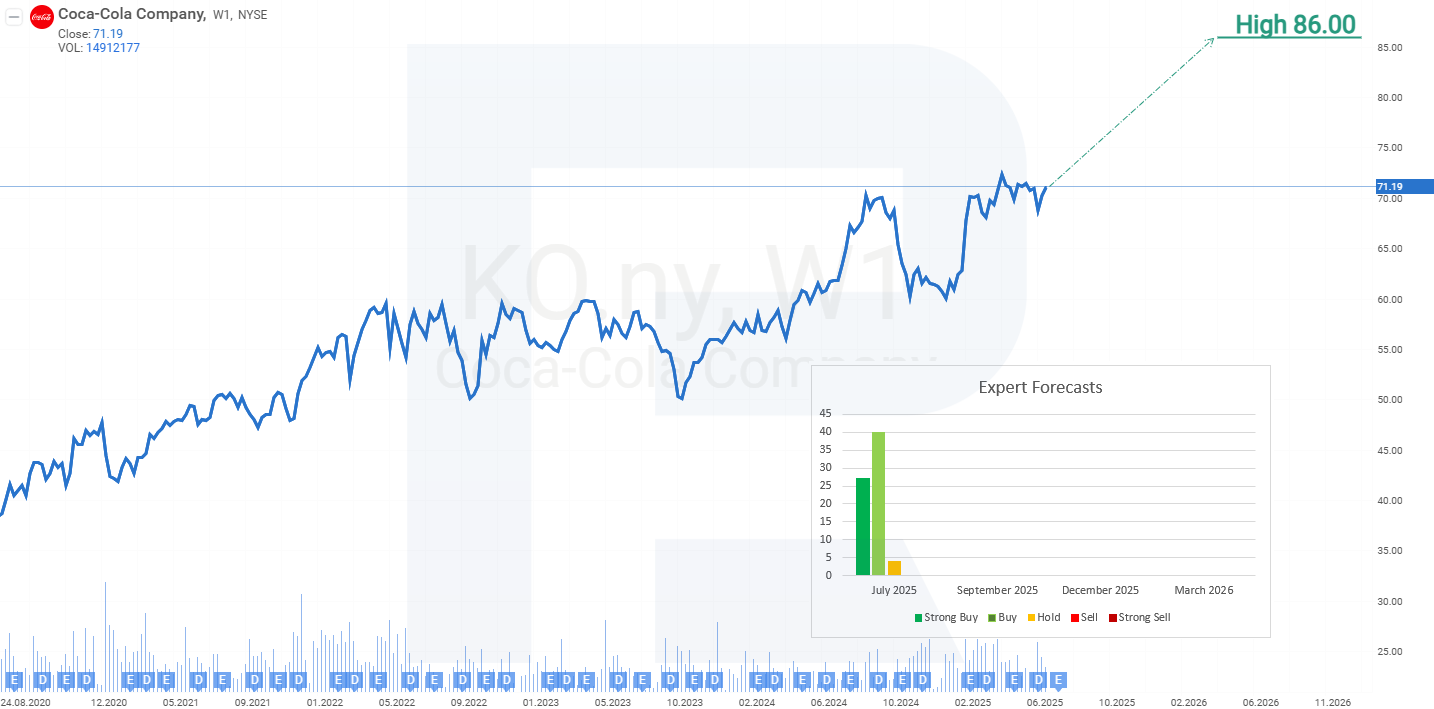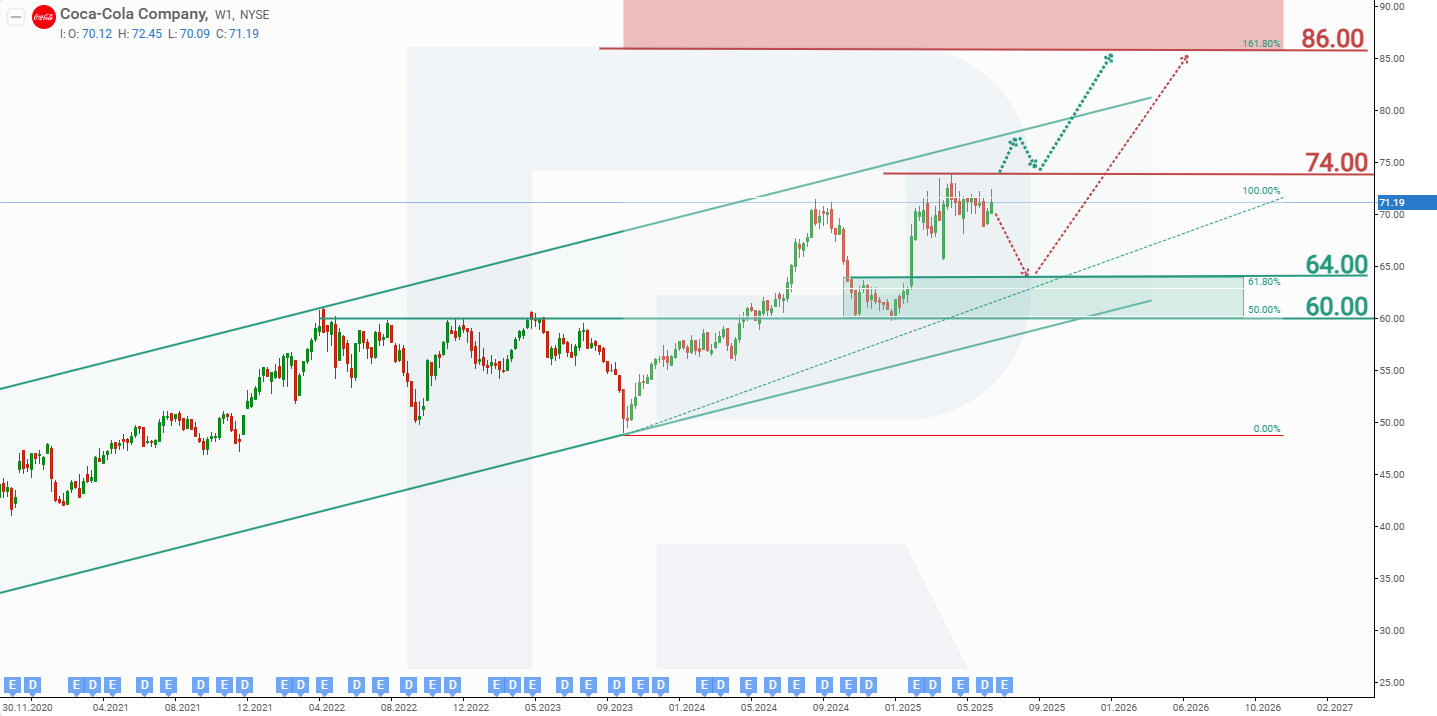Coca-Cola remains resilient, but growth catalysts are lacking
Investors found little in The Coca-Cola Company’s Q1 2025 earnings report or forward guidance to serve as a catalyst for share price growth. As a result, KO shares continue to trade sideways in anticipation of the Q2 2025 financial results.
The Coca-Cola Company (NYSE: KO) delivered mixed yet resilient results for the first quarter of fiscal year 2025. Revenue declined by 2% to 11.1 billion USD, driven by currency fluctuations and the outsourcing of bottling operations to external partners. However, organic growth reached 6%, supported by a 5% increase in product assortment and a 1% rise in concentrate volume.
The company maintained strong profitability, with a non-GAAP operating margin of 33.8% and adjusted earnings per share of 0.73 USD, slightly above expectations. These figures reflect effective cost management and disciplined pricing. Coca-Cola increased its share of the non-alcoholic beverage market, particularly through strong sales of Coca-Cola Zero Sugar, as well as products in the water, sports drink, tea, and coffee categories.
Management described the impact of global tariffs as manageable, citing packaging flexibility and supply chain adaptability as key tools for mitigating cost pressures.
Despite exceeding earnings expectations and reaffirming full-year guidance, Coca-Cola shares remain in a holding pattern. Soft financial results, currency headwinds, and the management team’s cautious tone have dampened investor sentiment, especially given that the stock already trades at a premium to the broader market. The forward P/E ratio stands above 22, while the projected earnings growth is a modest 2–3%, raising the risk of a correction in the absence of new growth drivers.
This article reviews The Coca-Cola Company, outlines the sources of its revenue, summarises its performance in Q1 FY2025, and presents expectations for Q2 FY2025. A technical analysis of KO is also included, providing the basis for a 2025 calendar-year stock forecast for The Coca-Cola Company.
About The Coca-Cola Company
The Coca-Cola Company is one of the world’s largest producers of non-alcoholic beverages. It was founded in 1886 by pharmacist John Stith Pemberton in Atlanta, Georgia. The company went public in 1919, listing on the New York Stock Exchange under the ticker KO.
Coca-Cola manufactures, markets, and sells carbonated soft drinks, juices, water, energy drinks, sports drinks, and tea-based beverages. It owns a portfolio of more than 200 brands, including Coca-Cola, Fanta, Sprite, Minute Maid, and Powerade.
Key competitors include PepsiCo, Nestlé, Keurig Dr Pepper and, in certain categories, local beverage producers.
Image of The Coca-Cola Company nameThe Coca-Cola Company’s main financial streams
The Coca-Cola Company’s business model is based on a global franchising and beverage distribution system, with revenue generated from several key sources:
- Sales of concentrates and syrups: this is the company’s primary revenue source, encompassing the sale of concentrates, syrups, and base ingredients to independent bottling partners. These partners produce, bottle, package, and distribute beverages under the Coca-Cola brand. The company earns stable income from the high-margin nature of this segment.
- Sales of finished beverages: Coca-Cola holds stakes in several bottling companies (such as Coca-Cola FEMSA and Coca-Cola HBC) and, in some regions, manages production and distribution independently. Revenue is generated across the entire value chain – from manufacturing through to the sale of finished products.
- Licensing fees and royalties: the company receives income from licences and brand usage. Bottlers pay royalties for the right to sell products under brands such as Coca-Cola, Fanta, Sprite, and others.
- Sales of other non-alcoholic beverages: beyond carbonated drinks, Coca-Cola generates revenue from juices (Minute Maid), water (Dasani, Smartwater), tea and coffee (Gold Peak, Georgia Coffee), energy drinks (Monster, BodyArmor), and sports drinks (Powerade). These brands contribute income through both concentrates and the sale of finished products.
- Advertising and marketing partnerships: indirect revenue streams include participation in joint advertising campaigns with retailers and major distributors, which help to increase sales volumes.
Thus, Coca-Cola’s business model relies on scalability, strong brands, franchising, and a broad product portfolio, enabling revenue generation from both raw materials and finished goods.
The Coca-Cola Company Q1 FY2025 report
On 29 April, The Coca-Cola Company published its Q1 FY2025 report for the period ending 28 March. Below are the key financial figures compared with the same period last year:
- Revenue: 11.13 billion USD (-2%)
- Net profit: 3.33 billion USD (+5%)
- Earnings per share: 0.73 USD (+1%)
- Operating margin: 33.8% (+120 basis points)
Revenue by country:
- Europe, Middle East & Africa: 2.66 billion USD (+1%)
- Latin America: 1.48 billion USD (-3%)
- North America: 4.36 billion USD (+3%)
- Asia Pacific: 1.42 billion USD (-4%)
The Coca-Cola Q1 FY2025 report reflects resilient operating performance despite revenue pressures. Revenue declined by 2% to 11.13 billion USD, primarily due to adverse currency effects and the refranchising of retail bottling operations to partners. Operating profit increased by 10%, with operating margin rising to 33.8% from 31.8% a year earlier – a result of effective cost management, pricing strategy, and benefits from refranchising.
Earnings per share rose by 1% to 0.73 USD, despite a significant negative currency impact of 5 percentage points. Global unit case volume grew by 2%, with robust growth recorded in India, China, and Brazil. Sales of Coca-Cola Zero Sugar increased by 14% across all regions.
Free cash flow was negative at -5.51 billion USD, primarily due to a one-off payment of 6.10 billion USD related to the Fairlife transaction. Excluding this item, free cash flow was 558 million USD.
Management reaffirmed its full-year 2025 guidance. Organic revenue growth is expected to be in the range of 5-6%, with non-GAAP EPS growth forecast at 2-3%. Free cash flow guidance remains around 9.50 billion USD. For Q2, the company indicated expected currency headwinds of approximately 3% on revenue and 5-6% on earnings per share.
For investors, this report confirms the resilience of Coca-Cola’s business model. Pricing discipline remains intact, margins are strengthening, and growth in emerging markets offsets softness in mature markets. Currency and one-off costs are expected to decline in the coming quarters. Management’s confidence, supported by a stable outlook, makes the company’s shares attractive for long-term investors seeking stability, dividends, and global diversification.
Expert forecasts for The Coca-Cola Company stock
- Barchart: 20 out of 23 analysts rated Coca-Cola stock as Strong Buy, two as Moderate Buy, and one as Hold. The highest target price for share price growth is 86 USD
- MarketBeat: 17 out of 18 experts assigned a Buy rating, with one recommending Hold. The highest target price for share price growth is 86 USD
- TipRanks: 15 out of 16 surveyed analysts gave a Buy rating, and one recommended Hold. The highest target price for share price growth is 86 USD
- Stock Analysis: seven out of 15 experts rated the stock as Strong Buy, seven as Buy, and one as Hold. The highest target price for share price growth is 86 USD
The Coca-Cola Company stock price forecast for 2025
On the weekly chart, Coca-Cola stock is trading within an upward channel, close to its all-time high of 74 USD. The recent quarterly report failed to trigger a breakout above this level, as investors see few clear catalysts for further price appreciation. The Q2 FY2025 results, scheduled for release on 22 July, may provide greater clarity and spark renewed interest in KO shares. Based on the stock’s recent price dynamics, the scenarios for Coca-Cola’s share price movement in 2025 are as follows:
The base-case forecast for The Coca-Cola Company stock anticipates a break above resistance at 74 USD, followed by a continued rise towards 86 USD.
The alternative scenario for The Coca-Cola Company shares suggests a further decline in KO’s price towards support at 64 USD. A rebound from this level would indicate the end of the correction and the start of a new upward trend. In this case, the key upside targets would remain 74 USD and 86 USD.
The Coca-Cola Company stock analysis and forecast for 2025Risks of investing in The Coca-Cola Company stock
Investing in Coca-Cola stock involves macroeconomic, industry-specific, and company-level risks that may negatively impact its revenue. The key risks include:
- Shifts in consumer preferences: the growing focus on healthy lifestyles and declining consumption of sugary drinks could negatively affect sales of Coca-Cola’s traditional products, including Coca-Cola and Fanta.
- Regulatory restrictions and taxation: many countries are introducing or considering regulations on advertising and labelling of high-sugar products. These measures may dampen demand and increase operational costs.
- Currency fluctuations: with over half of Coca-Cola’s revenue generated internationally, exchange rate movements – particularly a stronger US dollar– can reduce reported revenue and profit in dollar terms.
- Geopolitical and economic risks in international markets: instability in emerging economies, inflation, trade restrictions, sanctions, or local crises can lead to demand disruptions, supply chain issues, and losses in overseas markets.
- Reliance on franchised bottlers: although Coca-Cola sells concentrates, brand success heavily depends on the performance of bottling partners. Challenges related to logistics, product quality, or operational stability among these partners can negatively impact sales.
- Competition within the beverage industry: Coca-Cola faces strong competition from PepsiCo, Nestlé, Keurig Dr Pepper, and numerous local brands. Increasing competition may result in price pressure, market share losses, or the need for higher marketing expenditure.
- Legal and reputational risks: scandals involving product quality, labour conditions, or partner conduct can damage brand image and result in short-term sales declines.
These risks highlight Coca-Cola’s sensitivity to changes in global consumer trends, regulation, and its operational network, and should be considered by investors when evaluating the company’s outlook.





